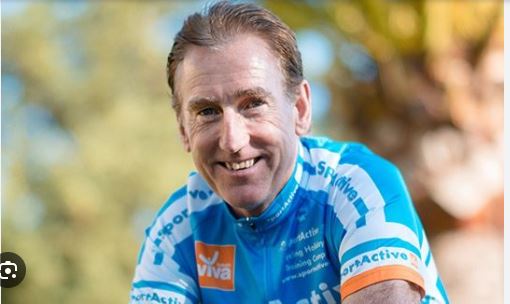
Former world number one Sean Kelly has commented about the high number of crashes in the pro bunch, identifying several factors he believes have made things more dangerous in recent years.
Kelly – regarded as one of the top analysts in the sport – was commenting in the aftermath of several major crashes in recent weeks, including at the recent Itzulia Basque Country, where a number of riders were injured, including Tour de France favourites Jonas Vingegaard, Remco Evenepoel and Primož Roglič.

“There are these high speeds now,” Kelly told stickybottle. “The bikes are so aero, and maybe more difficult to handle. They add a bit more speed to the riders, as does the aero clothing.
“Everything is all about speed now, and you can only go so fast in some of those corners. That’s the problem, they are arriving at too much speed.”
That is exacerbated by the larger gears riders can use with greater aerodynamics, something which in turn has an effect on descents.
“Of course, they are using much bigger gears. We hear about this crazy gearing in different events like in time tries, especially,” Kelly said. “But also in the normal road races they are using these huge gears.
“So that means that on descents you can get higher speeds than before as you don’t run out of gearing. Previously you were spinning out and you couldn’t pedal anymore. So that adds to it.”
The faster things get, the higher a skill level is required for riders. Some such as Tom Pidcock are regarded as amongst the best in the bunch in such conditions, although even Pidcock crashed out while doing reconnaissance for the stage one time trial in the Itzulia Basque Country.
/origin-imgresizer.eurosport.com/2014/03/15/1200840-25088440-2560-1440.jpg)
Other riders don’t have the same level, creating a disparity in the bunch. Kelly suggests that this could be due in part to different training methods nowadays, particularly as a young rider.
“Some riders can calculate how fast they can go on a corner. Others maybe don’t have enough experience and they just crash out and slide off the road,” he said.
“There is a question if bike handling is perhaps not as good as before. “There is talk about that as well, that when riders nowadays are junior they have a coach and they are told to go out and do X number of hours at X number of watts. This individual training. And they don’t get enough bike riding in groups.
“Whereas if you go back some years, a lot of riders trained together in groups of six or eight or 10 people. So perhaps with some riders, their bike handling is not as good as it should be.”
There is one more factor that has been spoken about recently, and it is something that Kelly feels is also worth considering in any evaluation of the amount of crashes that are occurring. That’s down to the increased stopping power available.
“The disk brakes are so sensitive. When you go on them hard, somebody behind you does not have the reflexes to react quickly. Then they just crash into the back of you. That’s how a lot of the crashes are happening,” he said.

“It slows up suddenly front, there is a bit of a panic, and they seem to crash in from behind. Eddie Dunbar had that problem there when he crashed in the UAE Tour. He was hit by behind.
“If a big guy hits you like that, and particularly if you are a light like Dunbar, it is like being hit in a car with a truck coming from behind.
“I think the issues are a lot to do with the speed they are going now, the bikes, the riders, the level of fitness that is there. There are more riders at a higher level a long, long way into a race. They’re all able to be up there to a certain point until the vital where the race is blown apart.
“You have 70, 80, 100 riders fighting for 30, 40 positions. And that’s going to equal crashes because there’s not enough room on the road.
“It’s just a combination of all those things that are causing those crashes.”
Leave a Reply